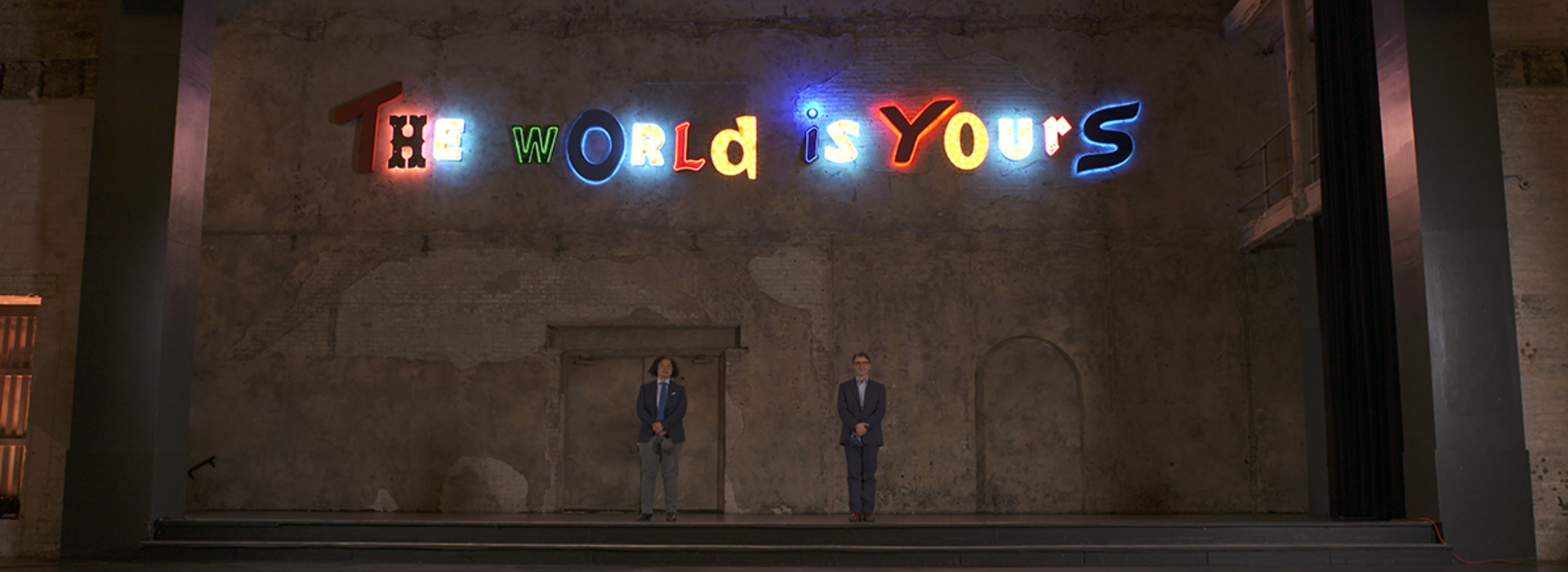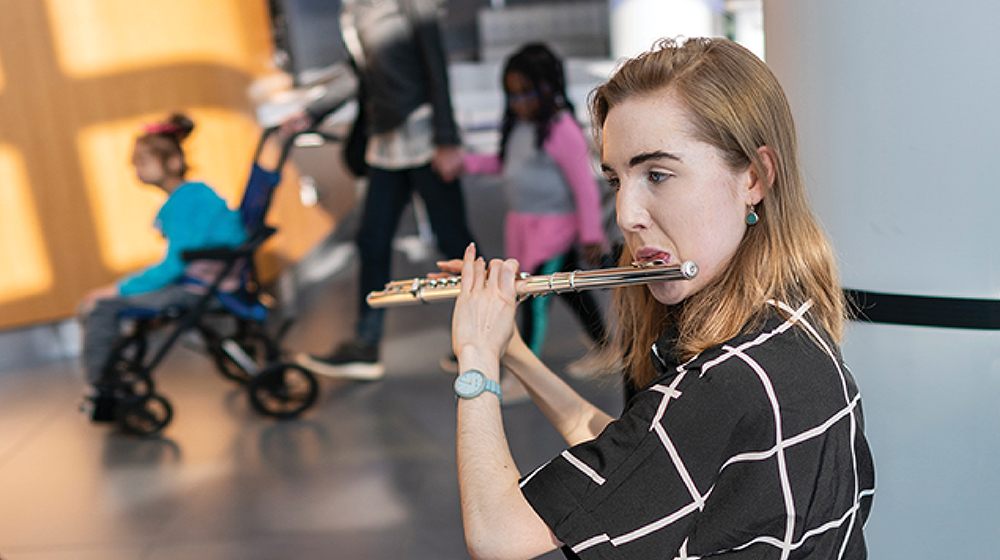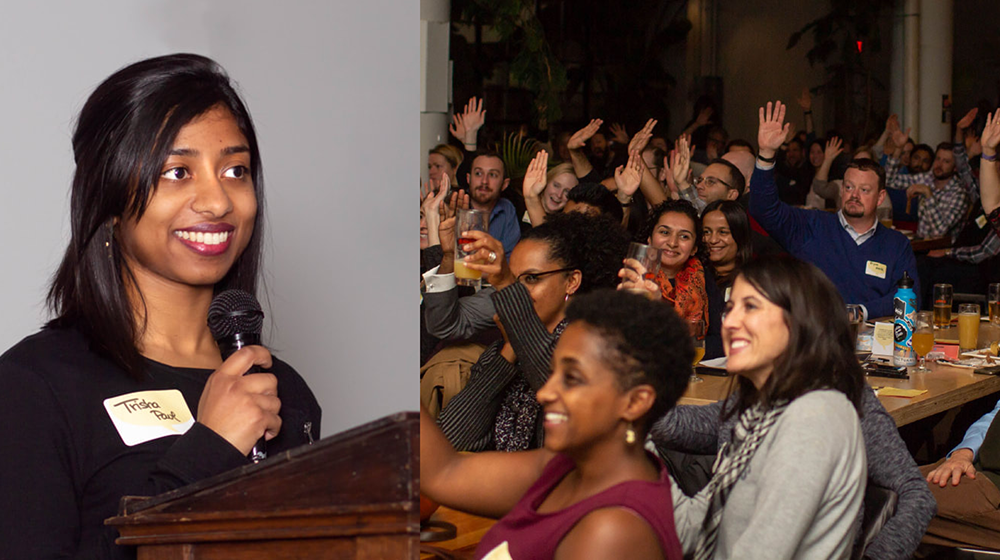
To Embody the Joy of Practice
TO EMBODY THE JOY OF PRACTICE
The U of M Medical School Launches New Center for the Art of Medicine
Read time: 5 minutes
Emotional exhaustion, compassion fatigue, suicide — these components of physician burnout led the Association of American Medical Colleges (AAMC) to make a well-studied recommendation in December 2020:
“The AAMC believes the arts and the humanities can play a unique and unrealized role in preparing and equipping physicians for 21st-century challenges,” reads a statement from the AAMC report, “The Fundamental Role of the Arts and Humanities in Medical Education.”
Those challenges include a newfound recognition of health disparities, civil unrest and now, the COVID-19 pandemic. Studies show that the concept of blending art and medicine can bring humanistic principles back into a field historically heavy in science, creating a new type of emotional intelligence needed to sustain resiliency in today’s healthcare workplace.
“We know that burnout is rampant among physicians and physicians in training, and it’s pretty clear that once people are burned out, it’s harder to get them back from that, than it is to prevent burnout in the first place,” says Maren Olson, ’03, MD, MPH, MEd, assistant professor in the Department of Pediatrics at the University of Minnesota Medical School.
She, alongside Jon Hallberg, ’92, ’95, MD, associate professor in the Department of Family Medicine and Community Health, and Ben Trappey, MD, assistant professor in the Departments of Medicine and Pediatrics, will lead the U of M Medical School’s new Center for the Art of Medicine (CFAM) — a network woven together by individual threads of passion for art and medicine that date back several years.
Hippocrates Cafe & Fisch Awards

The first thread of art and humanities at the U of M Medical School emerged over a decade ago. Dr. Hallberg was part of a center that had its funding cut and — as “an antidote,” he says — he gathered his own resources and nurtured to life “Hippocrates Cafe.” The live performance show uses storytelling and song to explore complex healthcare topics.
He told himself, “This is something that I can handle, and I can do it on my own. I don’t need any funding.”
And, he did do it on his own. Since 2009, Dr. Hallberg estimates he created 115 shows that were performed in eight states across the country for audiences anywhere from seven people for a private show to 1,000 for a large national conference.
This past September, Dr. Hallberg created the first-ever TV debut of Hippocrates Cafe on Twin Cities Public Television. Featuring 23 local artists and four national performers, the show titled, “Hippocrates Cafe: Reflections on the Pandemic,” is dedicated to healthcare and frontline workers and provides solace and support to all affected by the pandemic.
“The other thing that I started in 2007, the Fisch Art of Medicine Student Awards, have given out roughly $140,000 to second-, third- and fourth-year medical students to do something really creative with no strings attached,” Dr. Hallberg says. “The depth and breadth was really extraordinary with, frankly, a little bit of money.”

Reflective Writing & The Story Slam

A new thread of art and medicine emerged in 2013 when Dr. Trappey began his own monthly reflective writing group, which, at first, only included residents but has since opened to medical students and attendings.
“I have always been interested in writing, particularly reflective writing that healthcare providers do as sort of a therapeutic exercise,” Dr. Trappey says.
While presenting research at a conference about the impact of his reflective writing groups, he met Dr. Olson.
“I’m also someone who has loved to write and to use reflective writing for processing my own journey through medicine,” Dr. Olson says. “I’m also really interested in the ways we can incorporate writing into medical education. I love using essays to help teach residents and students a holistic understanding of medicine and have been known to show up on rounds with poems to share with my team.”
This reputation and her new friendship with Dr. Trappey landed her a special role in 2018 — organizing and planning the first-ever “Metro-wide Story Slam” hosted by the Metro Minnesota Council on Graduate Medical Education. Seventeen storytellers shared stories, poems and other word-driven performances in front of a 185-peer audience. By 2019, that audience had doubled.
“We have done four events thus far,” Dr. Olson says. “It’s been a really rewarding way to have all of these things that I am passionate about come together and to realize this is something we can share with other people as well.”

Center for the Art of Medicine
During the first and second Metro-wide Story Slams, Drs. Olson and Trappey asked Dr. Hallberg to host, and for the first time, these three threads of art and medicine storytelling — all powered by individual passions — began to weave a new idea.
“We were all doing disparate work, and there are other people doing work like this,” Dr. Trappey says. “Most times, we don’t know about each other until we come across each other. We needed a centralized location.”
In late 2019, Dr. Hallberg met with U of M Medical School leadership to “dust off” the decade-old idea of establishing a center. One of those leaders, Tim Schacker, ’87, MD, vice dean for research, introduced Dr. Hallberg to additional projects already underway, including the “Music Outreach in Healthcare Settings” course with the School of Music and the “Walk Back to Your Body” art showcase with the Weisman Art Museum.
“It, then, became very clear that Dean Tolar and Tim thought that there should be some kind of structure into which all of these various pieces could fit,” Dr. Hallberg says.
And, one year later — despite the barriers of a destructive pandemic — the CFAM has launched. Unlike other centers at peer institutions, this team will concentrate their initiatives on storytelling and content creation.
“There’s a lot of research that the human brain is wired for stories in a way that presenting people with data just doesn’t change their minds like a convincing story does,” Dr. Trappey says. “Just within medicine in general, there is a place for stories that isn’t as appreciated as it should be.”
Or, as well-studied. Now, as a center nestled comfortably underneath the purview of the U of M Medical School’s vice dean of research, the CFAM will be charged with and equipped to measure the impact of any and all outreach.
“What we’re learning from our research on the Story Slam is that people have a sense of community and are more resilient,” Dr. Olson said. “We are seeing that gathering as a community to share stories makes people feel connected and reminds them about empathy and about their sense of purpose in the work that they are doing — all things that are preventative in burnout.”
Dr. Hallberg says the CFAM’s goals are — among medical students, trainees and faculty — to deepen empathy, encourage curiosity, promote creative thinking and embody the joy of practice.
The CFAM’s first move as an official organization of the U of M Medical School is to listen.
“Ben and I just launched a new project to collect stories from healthcare workers across the state about their experiences during COVID-19,” Dr. Olson said. “These stories are posted on our website, which by sharing those, gives people a chance to not only share their voice but also to hear and learn from others’ experiences.”
To learn more about the CFAM or to submit a COVID-19 story, please visit the CFAM website.
Music in Clinics
Music students now play music for patients in the lobby of the M Health Fairview University of Minnesota Clinics and Surgery Center as part of the new class called, “Music Outreach in Healthcare Settings.” The class was created as a collaboration between the U of M Medical School and the U of M School of Music.
WAM Partnership
Four artists and five medical researchers banded together to discover how one’s artistic prowess and another’s medical expertise could blend together. Their findings, presented one year later at the “Walk Back to Your Body” exhibition in the Weisman Art Institute showed promise for a future where medical practice and creative collaboration unite.
Artistic Antidotes
These daily doses of poetry, prose, music and art can be integrated into clinical and self-care practices. To receive these via email, join the list by clicking here.